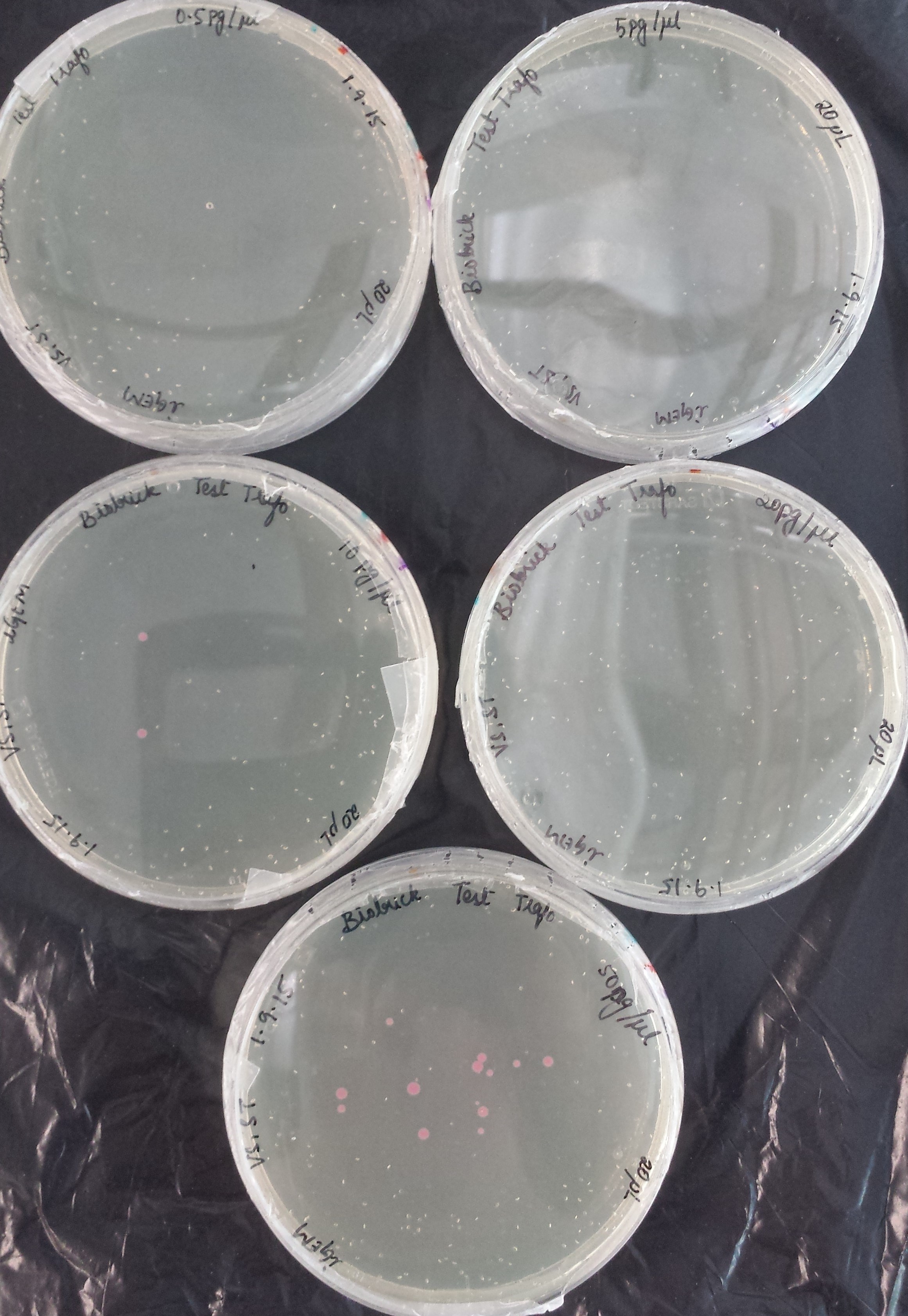Difference between revisions of "Team:Goettingen/Results"
| Line 246: | Line 246: | ||
</table> | </table> | ||
</div> | </div> | ||
| − | |||
| − | |||
| Line 255: | Line 253: | ||
<p><strong>RFP construct</strong></p> | <p><strong>RFP construct</strong></p> | ||
<p>RFP (RFP DsRed) was amplified from by PCR (Fig.1). Colonies on a plate were given to us by the Applied and Genomic Microbiology department. Primers contained restriction sites for <em>Kpn</em>I and <em>Sac</em>I in order to make them compatible for insertion into the multiple cloning site of the pBAD A vector.</p> | <p>RFP (RFP DsRed) was amplified from by PCR (Fig.1). Colonies on a plate were given to us by the Applied and Genomic Microbiology department. Primers contained restriction sites for <em>Kpn</em>I and <em>Sac</em>I in order to make them compatible for insertion into the multiple cloning site of the pBAD A vector.</p> | ||
| − | <img src=" https://static.igem.org/mediawiki/2015/5/58/PCR_RFP_DsRed_iGEM_Goettingen_2015.jpg" style=" | + | <img src=" https://static.igem.org/mediawiki/2015/5/58/PCR_RFP_DsRed_iGEM_Goettingen_2015.jpg" style="; float:right;"> |
<p>After purification of the PCR product it was ligated into pJET1.2 by subcloning (blunt end ligation). This vector serves to clone the fluorescent protein without triggering its activity, which may interact with the expression vector or the chosen <em>E.coli </em>strain.</p> | <p>After purification of the PCR product it was ligated into pJET1.2 by subcloning (blunt end ligation). This vector serves to clone the fluorescent protein without triggering its activity, which may interact with the expression vector or the chosen <em>E.coli </em>strain.</p> | ||
<p>Ligation into pJET1.2 was followed according to the protocol in the methods collection. After over-night incubation colonies were picked, plasmids extracted with the QIAGEN QIAprep Spin Miniprep Kit and restricted with <em>Kpn</em>I and <em>Sac</em>I.</p> | <p>Ligation into pJET1.2 was followed according to the protocol in the methods collection. After over-night incubation colonies were picked, plasmids extracted with the QIAGEN QIAprep Spin Miniprep Kit and restricted with <em>Kpn</em>I and <em>Sac</em>I.</p> | ||
| − | <img src=" https://static.igem.org/mediawiki/2015/1/1d/Restr_pJET_RFP_DsRed_iGEM_Goettingen_2015.jpg" style=" | + | <img src=" https://static.igem.org/mediawiki/2015/1/1d/Restr_pJET_RFP_DsRed_iGEM_Goettingen_2015.jpg" style="; float:right;"> |
<p>Once restriction controls showed the correct bands, both pJET_RFP_3 and pJET_RFP_7 were sent for sequencing by the G2L laboratory.</p> | <p>Once restriction controls showed the correct bands, both pJET_RFP_3 and pJET_RFP_7 were sent for sequencing by the G2L laboratory.</p> | ||
<p> </p> | <p> </p> | ||
Revision as of 07:16, 16 September 2015
Project Results
Transformation Efficiency Kit, RFP construct (iGEM)
RFP construct
Here you can describe the results of your project and your future plans.
What should this page contain?
- Clearly and objectively describe the results of your work.
- Future plans for the project
- Considerations for replicating the experiments
Project Achievements
You can also include a list of bullet points (and links) of the successes and failures you have had over your summer. It is a quick reference page for the judges to see what you achieved during your summer.
- A list of linked bullet points of the successful results during your project
- A list of linked bullet points of the unsuccessful results during your project. This is about being scientifically honest. If you worked on an area for a long time with no success, tell us so we know where you put your effort.
Inspiration
See how other teams presented their results.



